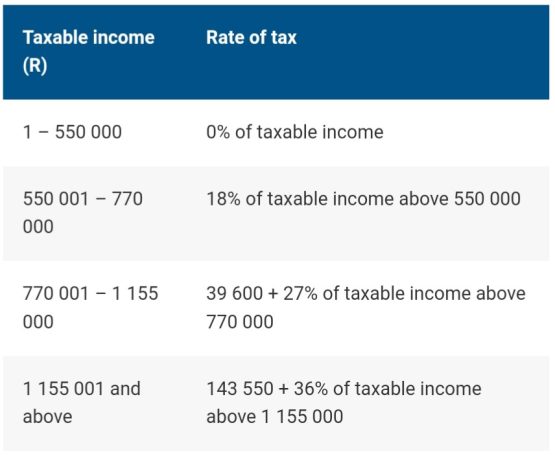Dear reader,
Thank you for your question.
You can withdraw from your pension fund even if you’ve withdrawn your pension in 2014. Below are the options available to you.
When resigning from a company, an individual has options. The first option is to take the benefit as a cash lump sum. The second option is to transfer the funds accumulated in their pension fund, into a preservation fund and the third option would be a combination of the two, to withdraw a portion of your capital as a lump sum, while transferring the remaining balance to a preservation fund.
Option 1
This choice is particularly relevant for individuals in urgent need of immediate access to funds for emergency situations. If you opt for the lump-sum payment as a cash benefit, you will be subject to taxation based on the withdrawal tax tables (refer to the tables below). Please note that since you have already withdrawn from a retirement fund, the R27 500 tax exemption does not apply.
Option 2
A preservation fund is a type of investment vehicle designed to help individuals preserve and protect their retirement savings when they resign from their jobs. Once the funds have been transferred to a preservation fund, the normal retirement rules apply. This means when you retire you have the option to take one-third as a cash-lump sum and invest two-thirds into a compulsory life or living annuity.
If you have withdrawn from any retirement fund (pension, provident or retirement annuity) prior to or after retirement, it will reduce the tax-free portion available to you. It is important to note that the R550 000 tax-free portion is a cumulative total for your lifetime.
This means if you have multiple retirement funds and you retire from one of them, taking your full tax-free portion, the next time you retire from another fund, you will be taxed on the full cash lump sum benefit.
Furthermore, when invested in a preservation fund, you are entitled to a once-off full or partial withdrawal prior to retirement after which you will not be able to withdraw until you reach retirement age (55 years). This withdrawal will get taxed according to the withdrawal tax tables (see below).
Option 3
This alternative is appropriate for investors who desire to maintain their retirement funds while requiring access to a portion of their capital for emergencies. One possibility is to withdraw a portion of your capital as a lump sum while transferring the remaining balance to a preservation fund. Nevertheless, it’s important to note that this approach is more costly since it entails being taxed twice.
Rules at retirement
Provident fund
Any contributions made before 1 March 2021, are called the ‘vested’ portion of your provident fund and will not be subject to the two-thirds annuitisation rule. Upon reaching retirement, current members of the provident fund will have the option to receive the entire accumulated value of the vested portion of their investment in a single payment, just as they were initially allowed to do.
Pension fund
If it is a pension fund then there is no vested portion, meaning all contributions will be subject to the two-thirds annuitisation rule, where you have the option to take one-third as a cash-lump sum and invest two-thirds into a compulsory life or living annuity.
While it may be tempting to withdraw funds from your retirement account when switching jobs, the situation changes if the money is required for emergency purposes. It is always advisable to save for retirement, aiming for a comfortable lifestyle during your post-employment years.
If you have not yet retired, we recommend preserving your funds to allow them to continue growing.
Retirement tax table
Source: Sars
Withdrawal tax table

Source: Sars

